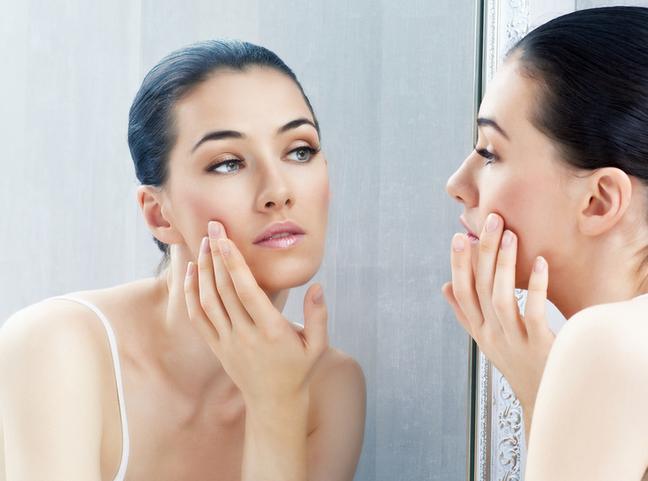I am introducing a rejuvenating care week! I would like to revitalize my skin a bit. I am currently testing products with anti-aging ingredients. What is the most popular rejuvenating ingredient? The first one I thought about was the coenzyme Q10, and this is why today’s post will be fully devoted to this substance. After all, you need to know what should be applied to your face to look radiant, flawless and younger, right? Enjoy the read, girls;)
THE COMPONENT OF THE WEEK: COENZYME Q10
When I started preparing myself for this note, I did not know much about this ingredient. I missed during the biology lessons, for example, that our body produces the coenzyme Q10 itself.
Another name for this substance is ubiquinone – it is necessary for the proper functioning of the cells of our body because it takes an active part in the production of energy from sugar supplied to the body. Sometimes coenzyme Q10 is called vitamin Q – quite rightly because it has a vitamin-like character. It is present in every cell of our body and stimulates metabolic changes. Its deficiency can be troublesome.
How does coenzyme Q10 work?
The effects of coenzyme Q10 can be compared to the role of the spark plug in the engine. Just as a car cannot start without a spark, so our body cannot work without coenzyme Q10. It’s an ingredient that should not be missing from our body because:
- it supports the treatment of many diseases,
- it is responsible for the firmness and elasticity of the skin,
- it reduces wrinkles and prevents their formation,
- it takes care of the circulatory system and our heart,
- it supports the treatment of chronic obesity,
- it strengthens the effects of the vitamin of youth (E),
- it accelerates the regeneration of cells,
- it reduces the harmfulness of UV radiation.
These are not all properties of coenzyme Q10. It’s a very strong antioxidant. It has the ability to prevent the oxidation of good cholesterol into the bad one. In addition, it has valuable properties that can be used to increase immunity by inhibiting oxidation. Thanks to this property it also helps to improve the elasticity of blood vessels. Coenzyme Q10 is best known as an antioxidant used in cosmetics. It inhibits the development of free radicals responsible, among others for increased ageing processes.
Coenzyme Q10 deficiencies
When to use Coenzyme Q10? Young people should not worry about Q10 coenzyme deficiencies. As I have mentioned, the body produces this ingredient itself and makes sure it has the right concentration. The amount of coenzyme Q10 in the body decreases with age (its production decreases after the age of 35), as a result of high physical activity (in people training sports) or with high environmental pollution – then it is very important to provide it from the outside. Coenzyme Q10 deficiency reveals itself by:
- a significant decrease in energy and chronic tiredness,
- decreased immunity, more frequent cases of flu,
- a decrease in skin elasticity and its over-drying,
- rapid signs of ageing.
Where to look for coenzyme Q10?
Well-balanced diet
This valuable ingredient can be found primarily in food products. Before we reach for supplements, let’s buy some good fish (mackerel, salmon, tuna, sardines), offal, spinach, apples, nuts and whole grain products. Coenzyme Q10 can also be found in some oils, eg linseed or nut, but it must be remembered that it is a substance sensitive to high temperature – that is why its content in food decreases as a result of cooking or long storage. Coenzyme Q10 deficiency can also be compensated with adequate supplementation in tablets or liquid.
Cosmetics with coenzyme Q10
Which Coenzyme Q10 is the best? For me, the best option is No. 3, which is the right cosmetics for daily care. It is worth choosing those that contain high concentration of coenzyme Q10 because its trace amounts will not be able to visibly regenerate and rejuvenate the skin. The highest concentration of this ingredient can be found in creams for mature skin and all cosmetics from the anti-age series. Coenzyme Q10 can also be purchased separately in the form of an orange powder and be added in small amounts to other cosmetics in which it is absent or appears only in small amounts.
Coenzyme Q10 – contraindications
There are no studies that would allow you to determine the level of coenzyme Q10 in our body. That is why it is worth being cautious about supplementation with this ingredient because its excess is not beneficial either. Not everyone needs coenzyme Q10 and can take it because it thins the blood. Do not overuse it when taking medications for hypertension, after surgery or during breastfeeding.
How to use coenzyme Q10?
If you decide to take it, remember about the indicated dose of coenzyme Q10. During the day, we can take from 90 to 200 mg of this substance. If you use CoQ10 as an antioxidant (anti-ageing) treatment, the optimal dose is 100 mg per day. How long should I use CoQ10 for? Preferably for about half a year. In the form of a supplement, it should be taken with a meal. It is all different if we are want to use Coenzyme Q10 in cosmetics. Suitable creams or concentrated serums should be used according to the instructions on the label. The concentration of coenzyme Q10 in cosmetics is appropriately matched, therefore you cannot overdose it.
Summary:
Coenzyme Q10 has been called a wonderful care ingredient for a reason. It prolongs the life of our body’s cells and allows us to keep our youth for longer. It’s worth introducing it to your daily diet or discovering its cosmetic properties. I would definitely recommend it! 🙂


Leave a Reply